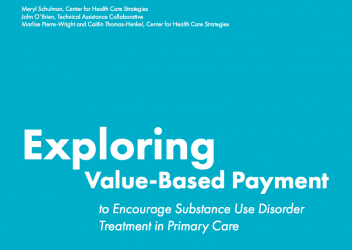
From 2000 to 2014, the rate of deaths in the United States from drug overdoses increased by 137 percent and the rate of overdose deaths involving opioid pain relievers and heroin by 200 percent.1 Tobacco use and excessive alcohol use also continue to be leading causes of preventable death.2 Nevertheless, access to treatment services for individuals with substance use disorders (SUDs) is lacking.3 Expanding the capacity and ability of primary care providers (PCPs) to assess and treat SUDs is critical to filling this gap in service delivery, particularly given the stigma associated with seeking treatment in specialty settings. Furthermore, PCPs are well positioned to address comorbidities like HIV, hepatitis C, and cardiovascular disease, which are more prevalent among adults with SUDs than in the general population.4 Value-based payment (VBP) is among the tools that policymakers and payers can use to encourage greater access to SUD treatment in primary care. With support from the Melville Charitable Trust, the Technical Assistance Collaborative and the Center for Health Care Strategies conducted interviews with stakeholders to understand how VBP levers can be used to encourage this type of integration. Drawing from the interviews, this brief examines how states and health plans are exploring VBP to promote SUD treatment in primary care, and offers considerations for implementing these models.

